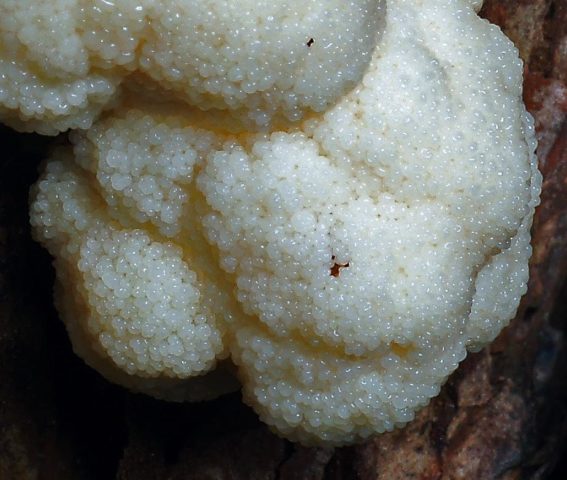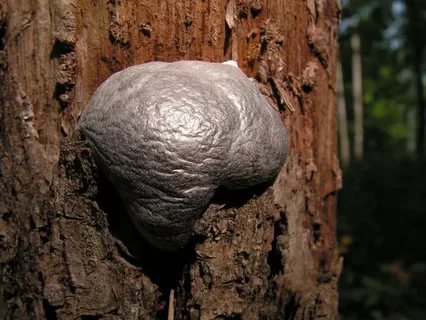Content
At the first stage, raincoat enteridium is in the plasmodium phase. The second stage is reproductive. Food includes all kinds of bacteria, mold, yeast and inorganic substances. The main condition for development is air humidity. In dry weather, the plasmodium turns into sclerotium, does not develop until the weather with the humidity necessary for its growth is established.

The first phase of development of enteridium
Where does enteridium raincoat grow
Enteridium raincoat grows on dried branches of trees, for example, alder, on stumps, logs. Often in the forest you can find slime molds on healthy trees and most often in the second stage of development (mature). In the first phase, the slime mold is not long, at this time it has a white consistency, creamy. It is very rare to see a slime mold at the first stage of life.

The fungus settles on a dead tree trunk
This mushroom loves wet areas. As a rule, these areas are located near swamps, near rivers and streams. It has been established that mushrooms settle on already dead elms, pines, on the trunks of elder, poplar, hazel. Fruiting occurs in late spring and autumn.
The mushroom is common in Mexico, England, Ireland and other European countries.
What does enteridium raincoat look like?
The entire developmental phase of the fungus consists of two cycles - nutritional (plasmodium), reproductive (sporangium). During the period of the cytoplasmic process between plant cells, fusion with each other occurs.
The reproductive cycle is transitional to a spherical form. The mushroom takes on the shape of a ball or an elongated oval. The body varies in diameter from 50 to 80 mm. Externally, the mushroom has a similarity to the eggs of slugs (in the initial stage). The raincoat is sticky, sticky to the touch.
The surface has a silvery coating, it stands out for its smoothness. When ripe, the surface turns brown. Fully ripe, it disintegrates into small parts, with its spores, it sows the surrounding areas.
Spores of a raincoat are spherical or ovoid. The color is brown, spotted. The maximum size is 7 microns.

The final cycle of development of the fungus (sporangia)
Is it possible to eat enteridium raincoat
Enteridium raincoat should not be used for food, although it is not considered poisonous, it is not toxic. This type of slime mold is not like the other varieties of this family.
Conclusion
Enteridium raincoat attracts flies, they lay larvae in the spore mass. Then they spread the spores to multiple trees, where they take root and go through new cycles of their life.








